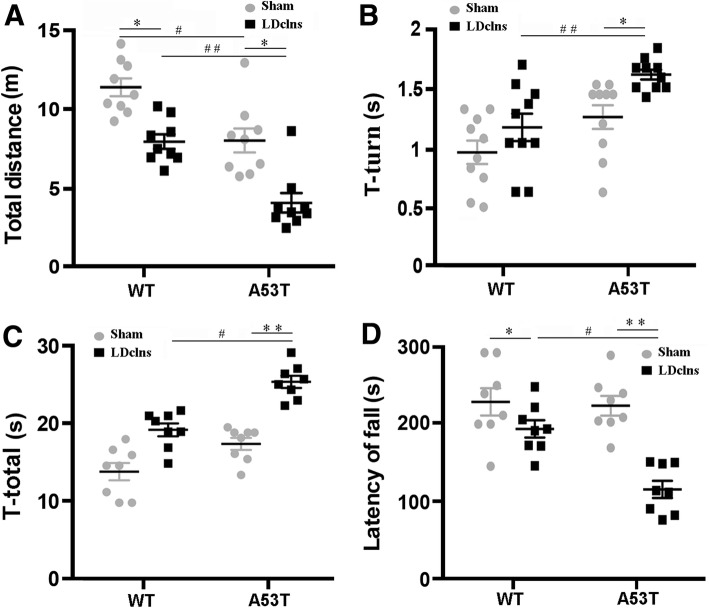Fig. 8.
LDclns induced motor impairments in A53T mice. a Locomotor activity of mice was assessed with open-field test. The movement distance significantly decreased in LDclns-A53T mice (genotype, F(1,32) = 17.87, p = 0.0002; ligament, F(1,32) = 19.35, p = 0.0001; interaction, F(1,32) = 0.1551, p = 0.6963). b-c Pole test was used to evaluate motor coordination of mice, showing that T-turn (genotype, F(1,32) = 13.98, p = 0.0007; ligament, F(1,32) = 11.01, p = 0.0023; interaction, F(1,32) = 2.022, p = 0.1647) and T-total (genotype, F(1,32) = 19.92, p < 0.0001; ligament, F(1,32) = 24.10, p < 0.0001; interaction, F(1,32) = 0.7967, p = 0.3788) significantly increased in A53T-LDclns mice. d Rotarod testing was also used to evaluate motor coordination of mice, the latency to fall off from the rod decreased significantly only in A53T-LDclns mice (genotype, F(1,32) = 5.425, p = 0.0263; ligament, F(1,32) = 17.38, p = 0.0002; interaction, F(1,32) = 4.848, p = 0.035). Data represent mean ± SEM from 9 mice per group

